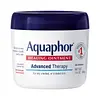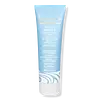What's inside
What's inside
 Benefits
Benefits

 Concerns
Concerns

 Ingredients Side-by-side
Ingredients Side-by-side

Water
Skin ConditioningCetrimonium Chloride
AntimicrobialCetyl Alcohol
EmollientHydrolyzed Soy Protein
HumectantAscophyllum Nodosum Extract
Skin ConditioningChlorella Pyrenoidosa Extract
Skin ConditioningSimmondsia Chinensis Seed Oil
EmollientPanthenol
Skin ConditioningBehentrimonium Methosulfate
Stearamidopropyl Dimethylamine
EmulsifyingPotassium Sorbate
PreservativeLecithin
EmollientAllantoin
Skin ConditioningCitric Acid
BufferingPhenyl Trimethicone
Skin ConditioningMoringa Oleifera Seed Extract
Skin ConditioningPassiflora Edulis Seed Oil
EmollientOryza Sativa Bran Oil
EmollientEuterpe Oleracea Fruit Oil
Skin ConditioningMusa Sapientum Fruit Extract
Skin ConditioningGlycerin
HumectantSalvia Hispanica Seed Extract
EmollientSodium Benzoate
MaskingEthylhexylglycerin
Skin ConditioningParfum
MaskingWater, Cetrimonium Chloride, Cetyl Alcohol, Hydrolyzed Soy Protein, Ascophyllum Nodosum Extract, Chlorella Pyrenoidosa Extract, Simmondsia Chinensis Seed Oil, Panthenol, Behentrimonium Methosulfate, Stearamidopropyl Dimethylamine, Potassium Sorbate, Lecithin, Allantoin, Citric Acid, Phenyl Trimethicone, Moringa Oleifera Seed Extract, Passiflora Edulis Seed Oil, Oryza Sativa Bran Oil, Euterpe Oleracea Fruit Oil, Musa Sapientum Fruit Extract, Glycerin, Salvia Hispanica Seed Extract, Sodium Benzoate, Ethylhexylglycerin, Parfum
 Reviews
Reviews

Ingredients Explained
These ingredients are found in both products.
Ingredients higher up in an ingredient list are typically present in a larger amount.
Glycerin is already naturally found in your skin. It helps moisturize and protect your skin.
A study from 2016 found glycerin to be more effective as a humectant than AHAs and hyaluronic acid.
As a humectant, it helps the skin stay hydrated by pulling moisture to your skin. The low molecular weight of glycerin allows it to pull moisture into the deeper layers of your skin.
Hydrated skin improves your skin barrier; Your skin barrier helps protect against irritants and bacteria.
Glycerin has also been found to have antimicrobial and antiviral properties. Due to these properties, glycerin is often used in wound and burn treatments.
In cosmetics, glycerin is usually derived from plants such as soybean or palm. However, it can also be sourced from animals, such as tallow or animal fat.
This ingredient is organic, colorless, odorless, and non-toxic.
Glycerin is the name for this ingredient in American English. British English uses Glycerol/Glycerine.
Learn more about GlycerinPanthenol is a common ingredient that helps hydrate and soothe the skin. It is found naturally in our skin and hair.
There are two forms of panthenol: D and L.
D-panthenol is also known as dexpanthenol. Most cosmetics use dexpanthenol or a mixture of D and L-panthenol.
Panthenol is famous due to its ability to go deeper into the skin's layers. Using this ingredient has numerous pros (and no cons):
Like hyaluronic acid, panthenol is a humectant. Humectants are able to bind and hold large amounts of water to keep skin hydrated.
This ingredient works well for wound healing. It works by increasing tissue in the wound and helps close open wounds.
Once oxidized, panthenol converts to pantothenic acid. Panthothenic acid is found in all living cells.
This ingredient is also referred to as pro-vitamin B5.
Learn more about Panthenol